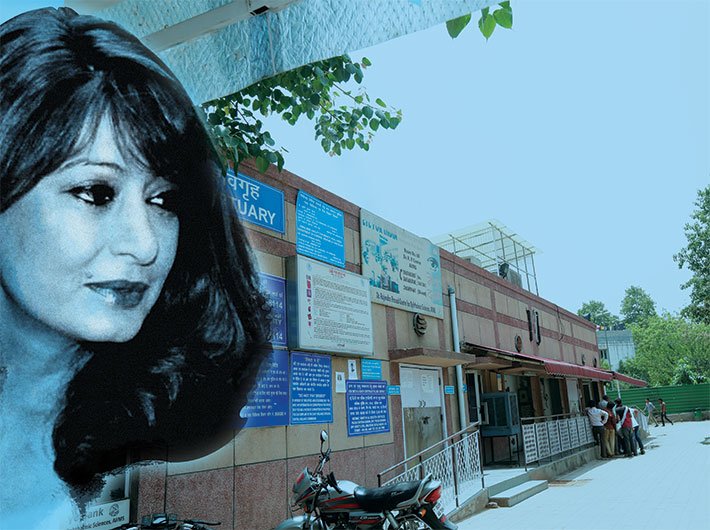Crime probe is often marred by incompetence, poor facilities and intra-departmental rivalries
Forensic science is the thin line that divides truth and untruth in a crime story. Its imperfection or manipulation in India often makes facts seem stranger than fiction. Nothing illustrates it better than the mystery surrounding the death of Sunanda Pushkar, a high-profile socialite and wife of former union minister Shashi Tharoor.
Pushkar’s body was found in a five-star hotel in Delhi on January 17 under doubtful circumstances. She was believed to be upset with her husband’s apparently growing indifference towards her. Tharoor was staying in the same hotel (though he had a house in Delhi in his capacity as the union minister) but in another room. Barely hours after he left the hotel to attend a Congress party function, Pushkar’s body was discovered by one of Tharoor’s staff. (Also read: Forensics is nobody’s baby)
It had all the makings of a crime story. Was she murdered? Or did she commit suicide? Tharoor was certainly the prime suspect. His testimony was bound to be viewed with suspicion. Pushkar, then, was the only one who could have revealed the truth. Since her testimony was out of question, resolving the mystery lay in the domain of forensic science. Strangely though the case became a riddle wrapped inside a mystery ever since the forensic probe kicked in.
Now this mystery has further deepened. Dr Sudhir Gupta, head of the forensic department of the All-India Institute of Medical Sciences (AIIMS), made a startling revelation in an affidavit to the central administrative tribunal (CAT) on June 27, alleging that he was pressured to give a “tailor-made” report on Pushkar’s autopsy. [It was first reported on the Governance Now website.] Of course, this revelation comes six months after the crime, and a month after Tharoor and his Congress party received a severe drubbing in the Lok Sabha elections.
Dr Gupta’s allegations in his affidavit before the CAT are unlikely to have any bearing on the investigation since the tribunal looks into administrative matters/disputes and not into issues related to doctors’ practice. At the same time, Dr Gupta has so far not revealed anything that would alter the course of investigation. For instance, his descriptions of the crime scene were mostly suggestive, and not conclusive, leaving much scope for wild interpretations. In such a situation, the investigating agency usually goes by circumstantial evidence – a situation that more often than not triggers controversy. (Also read: Indian forensics: Raising a stink)
As it happened in the Pushkar case, Dr Gupta has successfully stirred the hornet’s nest without shouldering accountability for it even though he was the head of the panel that conducted the autopsy. More worrying is the fact that l’affaire Pushkar forms a pattern when seen in the light of often tendentious formulations of forensic experts in such high profile cases.
Take the case of Noida-based liquor baron Ponty Chadha, killed in a fratricidal fight on November 2012. The autopsy was conducted in such a cavalier manner that it recovered only one bullet from the body though the police suspected a total of four. When police later discovered from an X-ray that three more bullets were indeed still lodged in the body, they had to retrieve the body from the relatives, and a second post-mortem had to be conducted – and the three bullets were indeed found.
That the AIIMS forensic department is susceptible to tailoring autopsy reports to suit the interests of police or of parties involved has come to light in a plethora of cases. The most pertinent case related to the murder of Dr YS Sachan, deputy chief medical officer of Uttar Pradesh whose body was found in a Lucknow jail on June 22, 2011. Sachan was implicated in a scam related to the national rural health mission (NRHM) funds that threatened to expose the then UP chief minister, Mayawati, and her key lieutenants. The team of forensic experts who visited the spot to assist the CBI declared the cause of death as suicide. The Lucknow high court summarily rejected the AIIMS experts’ findings, which prima facie appeared to be tendentious. The court also passed severe strictures on the functioning of the forensic department.
Similar incompetence and opacity came to light in the Arushi murder case and the Ishrat Jahan encounter case, inviting criticism from courts. The Ishrat Jahan case triggered a serious political controversy in which top leaders of the BJP got embroiled. The supreme court-mandated special investigation team (SIT) rejected the opinion of the AIIMS experts who saw the crime as a police encounter.
In Sunanda’s case, while Dr Gupta’s ‘revelation’ prompted TV channels to raise the predictable question of who killed Sunanda Pushkar, it should not be forgotten that the claim was made before a tribunal in a matter related to promotions in the AIIMS forensic department. This ongoing tussle for promotions is a fight to take hold of the levers of influence that can be often effectively used to please or run down political masters.
Dr Gupta’s intra-department rivalry with Dr TD Dogra – this is how the matter reached CAT – has impacted highly sensitive cases earlier too.
For instance the Shopian case: two young girls had died under mysterious circumstances in Kashmir on May 29, 2009. People feared that they were raped and killed by members of the security forces, and came out on streets in violent protests across the Valley. However, after the CBI took over the case, a team of doctors led by Dr Dogra, then the head of the AIIMS forensic department, exhumed the bodies and conducted second autopsy, nearly after 120 days after the death, and ruled out the possibility of rape.
The matter might have ended there, but Dr Gupta shot off a secret letter to the district judge raising serious doubts over the veracity of the autopsy report. The letter caused a political uproar in Jammu and Kashmir and cast doubts on the CBI investigation. A senior CBI officer admitted that though Dr Gupta had no locus standi in the case, his letter embarrassed the agency to no end. “Such indiscretions (Dr Gupta’s letter) instead of helping the investigation often muddles it up,” he said.
In what appears to be a commentary on the relevance of forensic science, the Madras high court once ruled that most medico-legal cases in the country were handled by non-forensic experts. The supreme court expressed similar views in 2006 (Vishnu alias Undraya Vs state of Maharashtra) while recognising the criticality of the forensic investigation in evaluating the evidence and arriving at the truth.
Perhaps it was the recognition of importance of the forensic science in the criminal justice system that compelled the UPA government to introduce the central forensic science bill and earmark '500 crore to upgrade skills of forensic scientists and improve infrastructure facilities. As a follow-up, director general, health services (DGHS) Dr Jagdish Prasad held a meeting of officials from all states and discussed ways to improve facilities in mortuaries at the district level. But the whole exercise has proved a non-starter and forensic science remains a neglected branch of medical science.
“In the five-year MBBS course, forensic medicine is taught for not more than 100 hours,” says Dr Mukesh Yadav, head of forensic department of Sharda Medical College, a private institute. In several private colleges, students earn a master’s degree in forensic medicine without even an elementary training in post-mortem. No wonder then, criminal investigations often get vitiated, distorting a sense of justice. Add to that, professional jealousies that mar forensic probes, and in the process blur the line that divides truth and untruth.
The renewed controversy over Dr Gupta’s supposed revelations regarding Pushkar’s death is only a sequel to the saga of criminal neglect of truth.
(The story appeared in the July 16-31 issue of the magazine)

